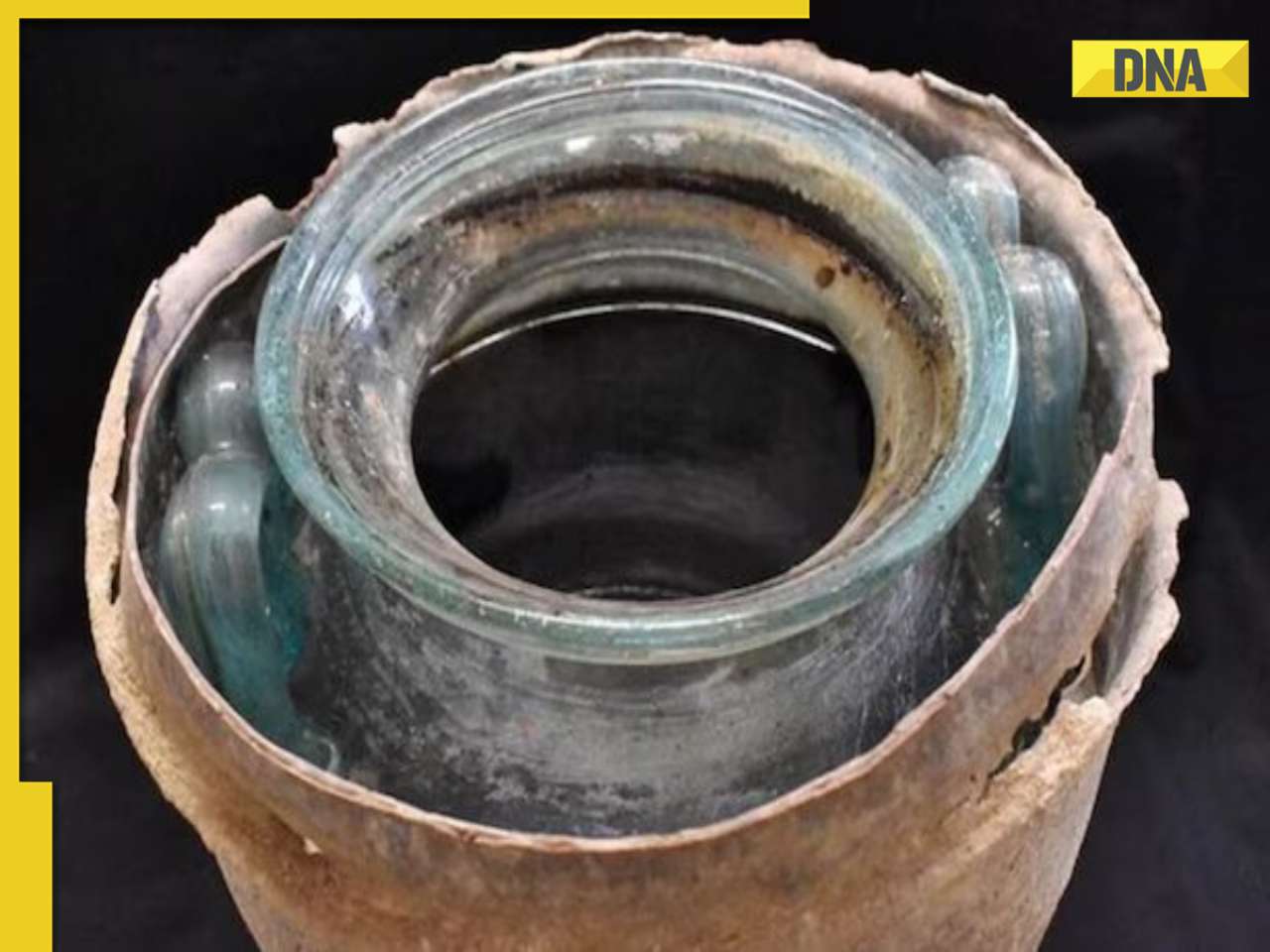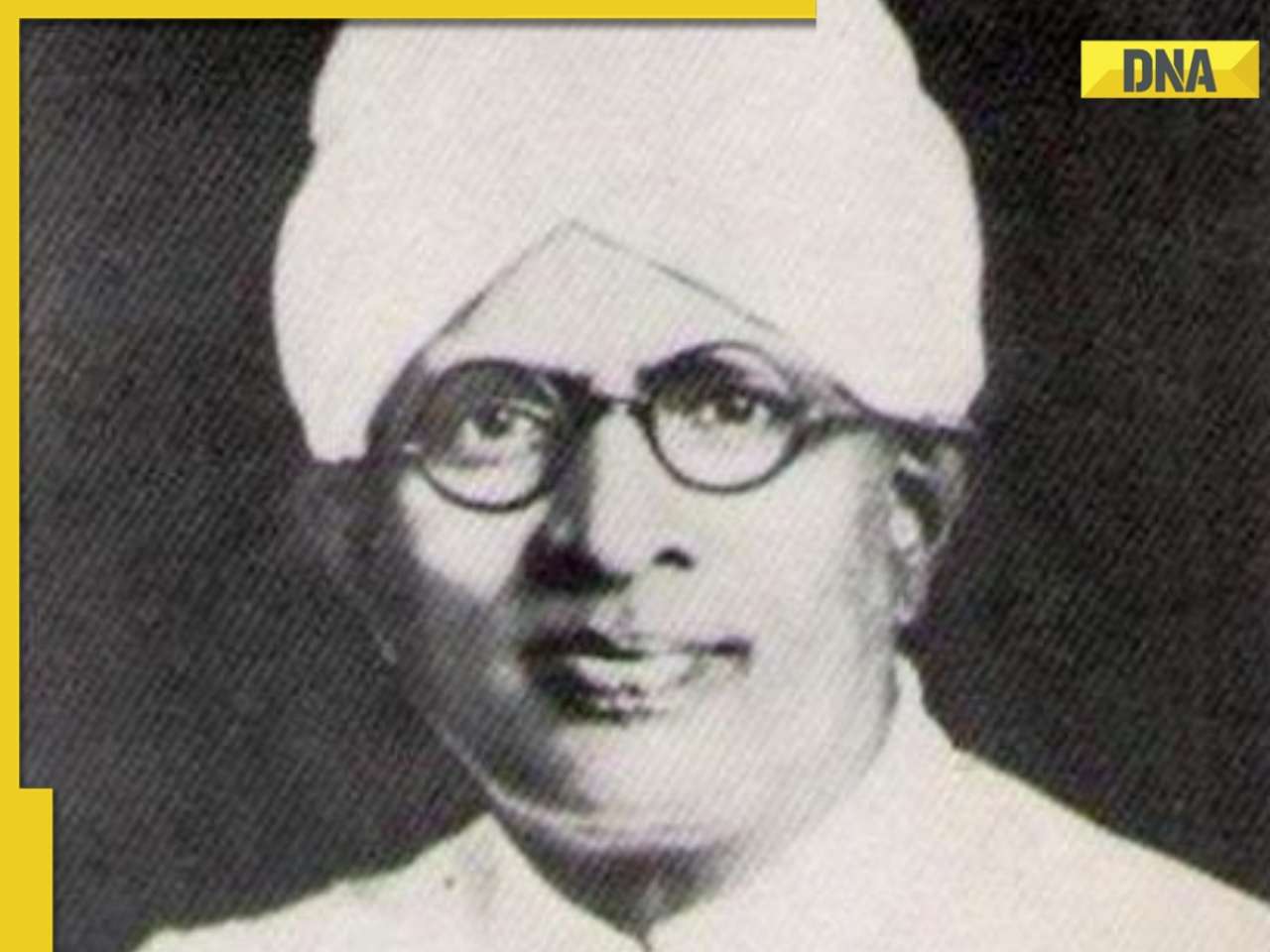CASH IN HAND: The court said that pension should be calculated on actual salary and not on the limit of Rs 15,000
Recently, the Supreme Court rejected a petition filed against a decision by the Kerala High Court on the quantum of pension payable under Employee Pension Scheme (EPS) 1995. The Employees Provident Fund Organisation (EPFO) had filed a petition against the Kerala High Court decision. If the Supreme Court decision is implemented, the pension paybale to employees of the private could be enhanced manyfold.
Let us understand the provisions of EPS 1995 and implications of the Supreme Court decision.
Provisions of EPS
The Employee Pension Scheme was introduced in 1995 to give pension to private sector employees, their widows and nominees. This scheme was introduced under the provisions of Provident Fund Act, 1952. Under the provident fund scheme employer is required to deduct 12% of the eligible salary of employee and is also required to match equal amount. As per the EPS, 1995, out of the employer's 12% contribution, 8.33% is transferred to the employee's pension account. The amount to be transferred to the pension account was initially fixed at Rs 6,500. It was later increased to Rs 15,000. So though the provident fund contribution might have been made at higher basic salary, the amount to be transferred to the employee's pension account would be restricted with reference to Rs 15,000. The balance (3.67% of Rs 15,000 and 12% over 15,000) would remain in the employee's provident fund account.
How EPS works
Pension for the employee starts at 58 years of age. An employee becomes entitled to pension only if he has rendered completed services for 10 years, failing which he is entitled to withdraw the amount in his EPS account.
For the purpose of computation of pension, maximum of 35 years of service are considered even if the actual years of services are higher. Likewise, an employee is entitled to a minimum of Rs 1,000 and maximum of Rs 7,500 as pension under EPS.
The pension is computed under a formula (number of completed years of services+2)*(Rs 15,000 or the average pensionable salary if it is less than Rs 15,000)/70. The bonus of two years will not be added to the completed years of service if the total completed years of service is less than 20 years.
While arriving at completed years of services, any period of six months or more is taken as full year. So the pension is computed with reference to maximum of Rs 15,000 of salary, irrespective of the amount of basic salary on which contribution towards PF was made. The average salary is computed with reference to salary drawn during previous five years.
Kerala High Court decision
The Kerala High court had held that pension should be computed with reference to the actual salary considered for the purpose of PF deduction and should not be restricted to Rs 15,000. This has been subsequently upheld by Supreme Court.
For example, let us assume a person's basic salary is Rs 1 lakh. He and his employer have opted not to restrict their PF contribution to 15,000 (which is permissible) and have been contributing to the PF on such higher salary. In such a case employer would have deducted as well as contributed Rs 12,000 toward PF, but only 8.33% of Rs 15,000, that is, Rs 1,250 would have gone to his EPS account and not 8.33% of Rs 1 lakh, that is, Rs 8,333 the entire amount to be considered for EPF contribution.
The Kerala High Court also said that the EPS scheme should compute the average salary with reference to average salary of last one year and not five years. As average salary computed with reference to latest lower number of years is going to be higher than if computed with reference to higher numbers, this too would result in higher pension for employee. The Kerala High court has also held that the EFPO can not recover anything beyond 12% as prescribed under the EPF.
Impact of the Supreme Court order
The Supreme Court decision has opened a Pandora's Box. The decision if implemented as it is will substantially increase the pension of employees as well as ex-employees, their widows and nominees. Is it possible for the EFPO to service so enhanced pensions for such a large number of people? I do not think EFPO can provide for this unless the government comes to its rescue.
In order to ensure that the pension of employees who are still employed, the differential amount of contribution of EPS may be made from their PF account. But what about the recovery from employees who have retired and have withdrawn the entire balance in their PF accounts?
In case of employees who have changed jobs during the career, some employers would have contributed pension on the entire salary on which PF is contributed, whereas others would have contributed on the basis of the minimum amount of Rs 15,000. In such a situation an employee who retires with higher contribution will be beneficially placed against a person whose contribution based on Rs 15,000 at the time of his retirement.
As the Kerala High Court has restored the basis of 12 months salary for computation of salary, it could also become open to manipulation. The pensionable salary may see substantial increase in the last year of the employment so as to entitle the employee who is superannuating soon, for higher pension without the employer losing anything.
COURT’S ORDER
- The Kerala High Court had said, and the Supreme Court subsequently upheld, that pension of private sector employees should be computed on average salary and not restricted to Rs 15,000 as capped under EPS
- The Kerala High Court also said that the EPS scheme should compute the average salary with reference to average salary of last one year and not five years.
The writer is a tax and investment
![submenu-img]() T20 World Cup Final: Rohit Sharma joins Kane Williamson in elite list, becomes first Indian captain to....
T20 World Cup Final: Rohit Sharma joins Kane Williamson in elite list, becomes first Indian captain to....![submenu-img]() Pankaj Tripathi fires back at Panchayat actor Pankaj Jha for claiming he romanticises his struggles: 'I am not...'
Pankaj Tripathi fires back at Panchayat actor Pankaj Jha for claiming he romanticises his struggles: 'I am not...'![submenu-img]() NEET PG 2024 revised dates to be announced within two days, says Education Minister Dharmendra Pradhan
NEET PG 2024 revised dates to be announced within two days, says Education Minister Dharmendra Pradhan![submenu-img]() Meet Indian genius who became world’s youngest surgeon at 7, started doing B.Sc at 12, master's at 17, joined IIT for...
Meet Indian genius who became world’s youngest surgeon at 7, started doing B.Sc at 12, master's at 17, joined IIT for...![submenu-img]() Jim Sarbh clarifies his 'mental therapy' comment wasn't targeted at Ranveer Singh: 'I find this almost absurd to...'
Jim Sarbh clarifies his 'mental therapy' comment wasn't targeted at Ranveer Singh: 'I find this almost absurd to...'![submenu-img]() NEET PG 2024 revised dates to be announced within two days, says Education Minister Dharmendra Pradhan
NEET PG 2024 revised dates to be announced within two days, says Education Minister Dharmendra Pradhan![submenu-img]() Meet Indian genius who became world’s youngest surgeon at 7, started doing B.Sc at 12, master's at 17, joined IIT for...
Meet Indian genius who became world’s youngest surgeon at 7, started doing B.Sc at 12, master's at 17, joined IIT for...![submenu-img]() Meet woman who cracked UPSC exam at 22, got AIR 28, became IAS officer in first attempt, now..
Meet woman who cracked UPSC exam at 22, got AIR 28, became IAS officer in first attempt, now..![submenu-img]() NTA announces new exam dates for UGC NET, CSIR NET; check details
NTA announces new exam dates for UGC NET, CSIR NET; check details![submenu-img]() UPSC topper IAS Tina Dabi is handling two crucial responsibilities, know details here
UPSC topper IAS Tina Dabi is handling two crucial responsibilities, know details here![submenu-img]() DNA Verified: Did Kangana Ranaut party with gangster Abu Salem? Actress reveals who's with her in viral photo
DNA Verified: Did Kangana Ranaut party with gangster Abu Salem? Actress reveals who's with her in viral photo![submenu-img]() DNA Verified: New Delhi Railway Station to be closed for 4 years? Know the truth here
DNA Verified: New Delhi Railway Station to be closed for 4 years? Know the truth here![submenu-img]() DNA Verified: Did RSS chief Mohan Bhagwat praise Congress during Lok Sabha Elections 2024? Know the truth here
DNA Verified: Did RSS chief Mohan Bhagwat praise Congress during Lok Sabha Elections 2024? Know the truth here![submenu-img]() DNA Verified: Is CAA an anti-Muslim law? Centre terms news report as 'misleading'
DNA Verified: Is CAA an anti-Muslim law? Centre terms news report as 'misleading'![submenu-img]() DNA Verified: Lok Sabha Elections 2024 to be held on April 19? Know truth behind viral message
DNA Verified: Lok Sabha Elections 2024 to be held on April 19? Know truth behind viral message![submenu-img]() Alia Bhatt mesmerises in gown, Ranbir Kapoor looks classy in tuxedo in latest romantic photos, fans say 'couple goals'
Alia Bhatt mesmerises in gown, Ranbir Kapoor looks classy in tuxedo in latest romantic photos, fans say 'couple goals'![submenu-img]() Newlyweds Sonakshi Sinha-Zaheer Iqbal pose candidly with paps; Anil Kapoor, Kajol, Huma Qureshi attend wedding reception
Newlyweds Sonakshi Sinha-Zaheer Iqbal pose candidly with paps; Anil Kapoor, Kajol, Huma Qureshi attend wedding reception![submenu-img]() Meet Lovekesh Kataria: Elvish Yadav's close friend, Bigg Boss OTT 3 contestant who lied to father, spent his fees on...
Meet Lovekesh Kataria: Elvish Yadav's close friend, Bigg Boss OTT 3 contestant who lied to father, spent his fees on...![submenu-img]() From Highway to Chandu Champion: 5 underrated gems from Sajid Nadiadwala
From Highway to Chandu Champion: 5 underrated gems from Sajid Nadiadwala![submenu-img]() In pics: Bigg Boss OTT 3 house with dragons, two-sided walls is all about fantasy coming alive
In pics: Bigg Boss OTT 3 house with dragons, two-sided walls is all about fantasy coming alive![submenu-img]() Lok Sabha Speaker's Election: What does the Constitution say?
Lok Sabha Speaker's Election: What does the Constitution say?![submenu-img]() Explained: Why is Kerala demanding to change its name to Keralam?
Explained: Why is Kerala demanding to change its name to Keralam?![submenu-img]() DNA Explainer: What is Kafala system that is prevalent in gulf countries? Why is it considered extremely brutal?
DNA Explainer: What is Kafala system that is prevalent in gulf countries? Why is it considered extremely brutal? ![submenu-img]() Lok Sabha Elections 2024: What are exit polls? When and how are they conducted?
Lok Sabha Elections 2024: What are exit polls? When and how are they conducted?![submenu-img]() DNA Explainer: Why was Iranian president Ebrahim Raisi seen as possible successor to Ayatollah Khamenei?
DNA Explainer: Why was Iranian president Ebrahim Raisi seen as possible successor to Ayatollah Khamenei?![submenu-img]() Pankaj Tripathi fires back at Panchayat actor Pankaj Jha for claiming he romanticises his struggles: 'I am not...'
Pankaj Tripathi fires back at Panchayat actor Pankaj Jha for claiming he romanticises his struggles: 'I am not...'![submenu-img]() Jim Sarbh clarifies his 'mental therapy' comment wasn't targeted at Ranveer Singh: 'I find this almost absurd to...'
Jim Sarbh clarifies his 'mental therapy' comment wasn't targeted at Ranveer Singh: 'I find this almost absurd to...'![submenu-img]() Rohit Saraf reacts to Ishq Vishk Rebound's dismal box office performance: 'What I can control is...'
Rohit Saraf reacts to Ishq Vishk Rebound's dismal box office performance: 'What I can control is...'![submenu-img]() Meet actress, who wanted to become criminal psychologist, broke off her engagement, is now among highest-paid stars
Meet actress, who wanted to become criminal psychologist, broke off her engagement, is now among highest-paid stars![submenu-img]() Rajinikanth hails Nag Ashwin for taking Indian cinema to a different level with Kalki 2898 AD: 'Eagerly waiting for...'
Rajinikanth hails Nag Ashwin for taking Indian cinema to a different level with Kalki 2898 AD: 'Eagerly waiting for...'![submenu-img]() World's oldest wine, buried 2000 years ago, was discovered in…
World's oldest wine, buried 2000 years ago, was discovered in…![submenu-img]() Meet world's most wanted woman, carried a reward of Rs 417241250 on her head, her crime is...
Meet world's most wanted woman, carried a reward of Rs 417241250 on her head, her crime is...![submenu-img]() Meet actress who was once compared to Marilyn Monroe, was stabbed 16 times when 8th month pregnant, hanged alive by..
Meet actress who was once compared to Marilyn Monroe, was stabbed 16 times when 8th month pregnant, hanged alive by..![submenu-img]() Most expensive bottled water, sold in Japan, is adorned with Swarovski crystals, cost per litre is Rs..
Most expensive bottled water, sold in Japan, is adorned with Swarovski crystals, cost per litre is Rs..![submenu-img]() Before Anant Ambani-Radhika Merchant's grand wedding, Mukesh Ambani and Nita Ambani plan to...
Before Anant Ambani-Radhika Merchant's grand wedding, Mukesh Ambani and Nita Ambani plan to...





































)


















)
)
)
)
)
)